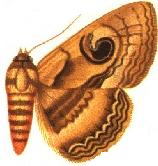The Isalo III Formation is a geological formation in Madagascar, off the eastern coast of Africa. It dates back to the Middle Jurassic. The use of the term "Isalo III" is somewhat controversial as the two prior units Isalo I and II are Triassic cross-bedded sandstone units that form a continuous depositional sequence, while the "Isalo III" sandstones are not part of the same depositional sequence, and were deposited considerably later. and are perhaps better treated as part of several separate formations. It is traditionally divided into two subunits the lower, Bajocian aged Isalo IIIa unit also known as the Beronono Formation and the upper, Bathonian aged Isalo IIIb unit also known as the Sakaraha Formation or Sakahara Formation. The Sakaraha Formation consists of sandstones, marls and carbonates and represents a coastal plain environment, and is laterally equivalent to the predominantly carbonate Bemaraha Formation, which represents a coastal barrier lagoon complex. The formation is found in the northwest and in the southeast of the country and has provided a variety of fossils.
Hyperfrontia is a genus of moths of the family Noctuidae.
Protomeroleuca is a monotypic genus of moths of the family Noctuidae. It contains only the species Protomeroleuca perlides from Madagascar.
Cyligramma griseata is a moth of the family Noctuidae. It is found in Africa, including Nigeria and Uganda.

Cyligramma disturbans is a moth of the family Noctuidae. This moth species is commonly found in Madagascar, as well as India.

Bastilla angularis is a moth of the family Noctuidae first described by Jean Baptiste Boisduval in 1833. It has an Oriental and Panafrican distribution. India, it is found in Eswatini, Gabon, Cabo Verde, São Tomé, Réunion and Madagascar.

Grammodes congenita is a moth of the family Noctuidae. It is found in Africa, including South Africa, Eswatini and Madagascar.
Max Gaede was a German engineer and entomologist of international fame who described several hundred of new species of Lepidoptera, mainly African Noctuidae.

Mario Giacinto Peracca was an Italian herpetologist.

Edingerella is an extinct genus of temnospondyl amphibian from the Early Triassic of Madagascar. It is a basal capitosaur closely related to Watsonisuchus.
Apamea macronephra is a moth of the family Noctuidae first described by Emilio Berio in 1959. It is found on Madagascar.
Oedebasis mutilata is a moth of the family Erebidae first described by Emilio Berio in 1966. It is known from eastern Madagascar.
Pandesma decaryi is a moth of the family Erebidae. It is native to central & south-western Madagascar.

Pericyma mendax is a moth of the family Noctuidae. It is found most countries in subtropical Africa south of the Sahara, in Cape Verde, Mauritius, La Réunion and Madagascar.
Emilio Berio was an Italian entomologist and lawyer.
Fodina viettei is a moth in the family Erebidae. It is found in north-western Madagascar.
Cerynea tetramelanosticta is a species of moth of the family Erebidae first described by Emilio Berio in 1954. It is found in Tanzania and in Mauritius.

Mythimna prominens is a moth of the family Noctuidae. It was described by Francis Walker in 1856. It is found on Malta and in Greece, France, the Iberian Peninsula and Italy. Outside of Europe, it is found in Morocco, the Republic of the Congo, the Democratic Republic of the Congo, Kenya, Réunion, Madagascar, Nigeria, South Africa and Zimbabwe.
Torta setteveli is a seven-layer cake. Traditionally served at birthdays, it includes chocolate and hazelnuts.





